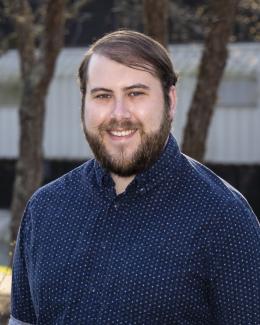Susan Hogle: Lifelong learning is key to solving R&D mysteries
Lifelong learning is key to solving R&D mysteries
October 3, 2017 - For many scientists and engineers, the first real test of their mettle comes not in a classroom, but in a lab or the field, where hands-on experience can teach volumes. For Susan Hogle, that hands-on experience just happened to be with material that was too hot to handle—literally.
One summer during her studies at the University of Toronto, Hogle interned at Atomic Energy of Canada Limited’s Chalk River Laboratories nuclear research facility, where she found herself playing the role of detective with some of the lab’s more antiquated storage systems.
“We were inspecting old waste tanks from the forties and fifties, and we weren’t 100 percent sure what was in them or what condition they were in,” Hogle said. “I was designing small mechanical manipulators to put cameras inside these tanks to inspect for cracks, corrosions and leaks.”
Her education in mechanical engineering allowed her to utilize her skills in new fields and tackle the large and small challenges involved with the operation and upkeep of nuclear facilities.
“I solve mysteries,” she said. “That’s the easiest way to sort the type of R&D science area where I work. It’s picking apart the details.”
Today, Hogle is a nuclear engineer in the Nuclear Materials Processing Group at the Department of Energy’s Oak Ridge National Laboratory. Her work in the Radiochemical Engineering Development Center focuses on advanced radioisotope production techniques and finding new methods to make them cheaper and faster. With improved isotope production, Hogle said, comes more effective cancer treatments and enhanced research productivity across the scientific spectrum.
Hogle was first steered towards engineering in high school by a supportive chemistry and physics teacher. She had little knowledge of nuclear science prior to her time at Chalk River, but she enjoyed the problem-solving nature of mechanical engineering and decided to pursue it further.
“Most 19-year-olds don’t have a clue what they want to do with their life,” Hogle said. “Mechanical engineering really covered a lot of bases, so I thought I would get a good general education in science and engineering, then I could figure out where I wanted to go from there.”
Her internship with AECL inspired her to follow nuclear engineering, so she came to the University of Tennessee, which had both a notable nuclear engineering program and a close working relationship with ORNL.
ORNL, like Chalk River Labs, presented an opportunity to learn about the structural and mechanical intricacies of nuclear systems. Hogle started working at ORNL during her doctoral studies in nuclear engineering at UT. She originally thought that she would stay for just long enough to finish her degree and learn more about the field before moving on to somewhere new.
“I thought it would be an opportunity to explore my interests and not feel like I was tied down and had to stay focused on this one thing for the next five or ten years,” Hogle said.
Once she started working at the lab, though, she quickly realized she didn’t want to leave. The freedom and opportunities at ORNL were a strong lure and so, after graduation, Hogle came back to the lab as a full-time staff member.
“I was always given a lot of flexibility to propose new ideas, to go with things and to take an idea I had and expand on my knowledge of it,” Hogle said. “I never felt constrained or limited to what I could work on.”
While her work makes up “a very narrow sliver” of the research done at REDC, Hogle said, she is always expanding her knowledge and training in new areas outside the traditional realm of her expertise.
“I challenge myself to learn new things and try to figure out if we can do things differently the next time, or do them better,” she said. “Just the fact that I am learning new things every day, and the things that I am doing might be contributing to a bigger overall picture of learning, is really important to me.”
One of the benefits of working at ORNL is gaining access to the vast repository of collective knowledge held by the researchers at the lab. Their decades of experience and expertise in their fields is impressive, Hogle said, and encourages her to push the boundaries of her own understanding.
“I definitely want to keep learning,” she said. “Learning and discovering new things piques my curiosity.”
Hogle is proud to be at an institution steeped in such historical significance and work in notable facilities such as the High Flux Isotope Reactor. Yet the most interesting part of ORNL is not what was done in the past, she said, but the potential for the novel, groundbreaking science yet to come.
“I try to look at how far we’ve come over the last couple of years and picture where we can go in the future,” she said. “That really keeps me motivated to see how far I’ve come and see how my work has contributed to the overall program here.”
Professional success, she said, comes not only from commercial achievements, but also from personal knowledge gained and a healthy research environment that values individual contributions to mission success.
“I think everybody has that drive, no matter what you do, no matter what field you’re in,” Hogle said. “You want to see how your work is going to impact the rest of the world.”
UT-Battelle manages ORNL for the DOE's Office of Science. The Office of Science is the single largest supporter of basic research in the physical sciences in the United States, and is working to address some of the most pressing challenges of our time. For more information, please visit http://energy.gov/science/. -- By Sean Simoneau


